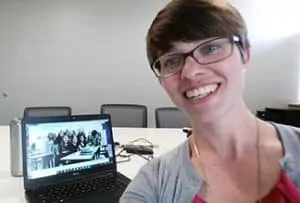

The U.S. Environmental Protection Agency (EPA) has identified 1, 2, 3 – Trichloropropane (TCP), which does not occur naturally in the environment, as an emerging chemical of concern that can threaten drinking water supplies. It states that TCP is a persistent pollutant in groundwater and has classified it as “likely to be carcinogenic to humans.” California State Water Board member Steven Moore called TCP an “insidious chemical” because it persists in the environment, sinks in water and is harmful in even tiny doses. Currently, there is no federal maximum contamination level (MCL) for TCP; however, there is a federal non-enforceable health-based screening level of 0.00075 ug/L.
Since 2012, TCP has been on the emerging Contaminant Candidate List (CCL), which is a watch list of unregulated contaminants that are known to, or anticipated to, occur in public water systems and may require regulation under the Safe Drinking Water Act (SDWA). The EPA has required, under the Unregulated Contaminant Monitoring Rule (UCMR), that large water systems test for TCP every five years with a minimum reporting level of 0.03 μg/L. This rule allows for the EPA to monitor contaminants suspected to be in drinking water that are unregulated under the SDWA. As a result of the testing, TCP has been identified across the US in drinking water sources. Currently, there is no federal maximum contamination level (MCL) for TCP; there is a federal non-enforceable health-based screening level of 0.00075 ug/L.
The author continues the paper with an examination of what TCP is and how it impacts our environment and our health. She then discusses regulatory policies and how California’s mandatory TCP standard could be a blueprint for other state water agencies currently investigating how to enhance their own drinking water protections from emerging contaminants.
Lyn covers some of the legal aspects, risks to businesses, detection, and treatment options to conclude her white paper. She also provides plenty of resources to start the journey toward sustainable treatment solutions that communities can afford.

When the Federal Coal Combustion Residual (CCR) rule went into effect in 2015, it was a new regulatory layer on top of a widely varying landscape of state regulations affecting CCR management in impoundments and landfills. Some states already had significant regulations on the books for CCR impoundments and/or landfills, while others did not.
Where state regulations existed, they varied widely from state to state. While a few states have moved toward closing the gap between state and Federal CCR requirements, many utilities continue to face confusing and conflicting requirements coming from different regulatory programs as they move ahead with managing their CCR facilities.
In her paper entitled State vs Federal CCR Rule Regulations: Comparisons and Impacts, Nicole Kron shares state-versus-federal regulatory challenges utilities have encountered during landfill design and management, impoundment closure, and groundwater monitoring and reporting since the implementation of the Federal CCR rule. For example, some sites have completely distinct groundwater monitoring programs under state-versus-federal rules, with different well locations, well depths, and monitoring parameters for the same facility. She highlights unique approaches to bridging regulatory gaps and resolving regulatory conflicts between state and Federal CCR requirements. Ms. Kron also provides insights gained on the long-term potential for regulatory resolution of these issues based on discussions with state regulators in multiple states.

About the Author: Nicole Kron has nearly a decade of experience in the environmental consulting field. Her experiences focus on groundwater quality analysis of sites contaminated with coal gasification byproducts, coal combustion byproducts, chlorinated solvents, petroleum products, metals, and PCBs. Her experience includes managing team task coordination, groundwater modeling, and statistical analysis of CCP/CCR sites. She is experienced in planning and performing soil and groundwater contamination investigations, air monitoring, well design and installation, and soil and groundwater sampling.
We will continue to see changes on the federal, state and local regulatory front that together will help us manage storm water in a smart, cost-effective manner preserving our water resources. Betsy Powers of SCS Engineers provides an update in her most recent article.
Until a new WOTUS definition is finalized, the U.S. EPA and the U.S. Department of the Army have indicated their intent to re-codify the pre-Obama regulations. The revised WOTUS rule is expected to include looser regulatory requirements, meaning fewer waters will qualify, and therefore, fewer permits will be required.
To speed up approvals of permits for highways, bridges, pipelines and other major infrastructure, an Obama-era executive order aimed at reducing exposure to flooding, sea level rise and other consequences of climate change were rolled back reducing the environmental reviews and restrictions on government-funded building projects in flood-prone areas.
Removing phosphorus from storm water runoff is a hot topic, with partners exploring alternative opportunities to reduce the introduction of phosphorus in runoff, remove it or manage it in watersheds.
More proprietary filters are being used for pretreatment before underground infiltration for redevelopment sites for total suspended solids (TSS) control and where land is limited. The performance of proprietary devices continues to be studied and improved to meet regulatory requirements. Increasing general attention is being paid to emerging contaminants that are problematic in storm water runoff. Among the emerging contaminants of concern are pharmaceutical and personal care products, pesticides, hydrocarbons, and hormones. Many of which are now included within the Endocrine Disrupting Chemicals group.

Betsy Powers is a civil and environmental engineer with SCS Engineers.
Article in Waste360: explains who’s impacted and how to begin managing the costs.
SCS Technical Bulletin: a digest of hundreds of EPA regulatory policy into the information and timelines to act on now.
Article: strategic financial planning to support infrastructure costs.
Call our compliance specialists – find the office nearest you or email us at
On June 1, 2016, the National Waste & Recycling Association (NWRA), the Solid Waste Association of North America (SWANA), and the Coalition for Renewable Natural Gas (RNG Coalition) provide comments on Pipeline Safety: Safety of Gas Transmission and Gathering Pipelines (FR20722) proposed rules to Mr. Mike Israni, Deputy Associate Administrator for Pipeline Safety – Field Operations at U.S. Department of Transportation. Comments by the three not-for-profits were made on behalf of the solid waste industry including companies, municipalities, and professionals.
The letter reflected the solid waste industry support for the efforts made by the Pipeline and Hazardous Materials Safety Administration (PHMSA) to ensure pipeline safety and included comments on the Advance Notice of Proposed Rulemaking, (ANPRM) as follows:
The revised definition for gathering line (onshore) as the basis for determining the beginning and endpoints of each gathering line requires further clarification. The definition remains too broad for applications that do not have the same level of risks since they are not accessible to the public.
PHMSA has elected not to propose rulemaking for landfill gas systems. However, it notes that pipelines that transport landfill gas away from the landfill to another facility are transporting gas and that PHMSA may consider this in the future.
The associations pointed out that the same rulemaking for landfill gas systems should apply to all forms of biogas that are collected and managed in a similar manner to landfill gas. Also noted was that low-pressure gas lines delivering biogas off-site to a dedicated end user need not be considered for further regulation as they do not present the same level of risk that natural gas or other high-pressure gas lines do. Landfill gas/biogas systems fall under federal, state and local regulators. Because landfill gas/biogas systems are regularly inspected for safety, generally use plastic piping, and do not present a substantial risk to the public the Associations feel that it is not necessary to consider additional regulation.
Contact NWRA, SWANA, RNG Coalition or SCS Engineers for more information.